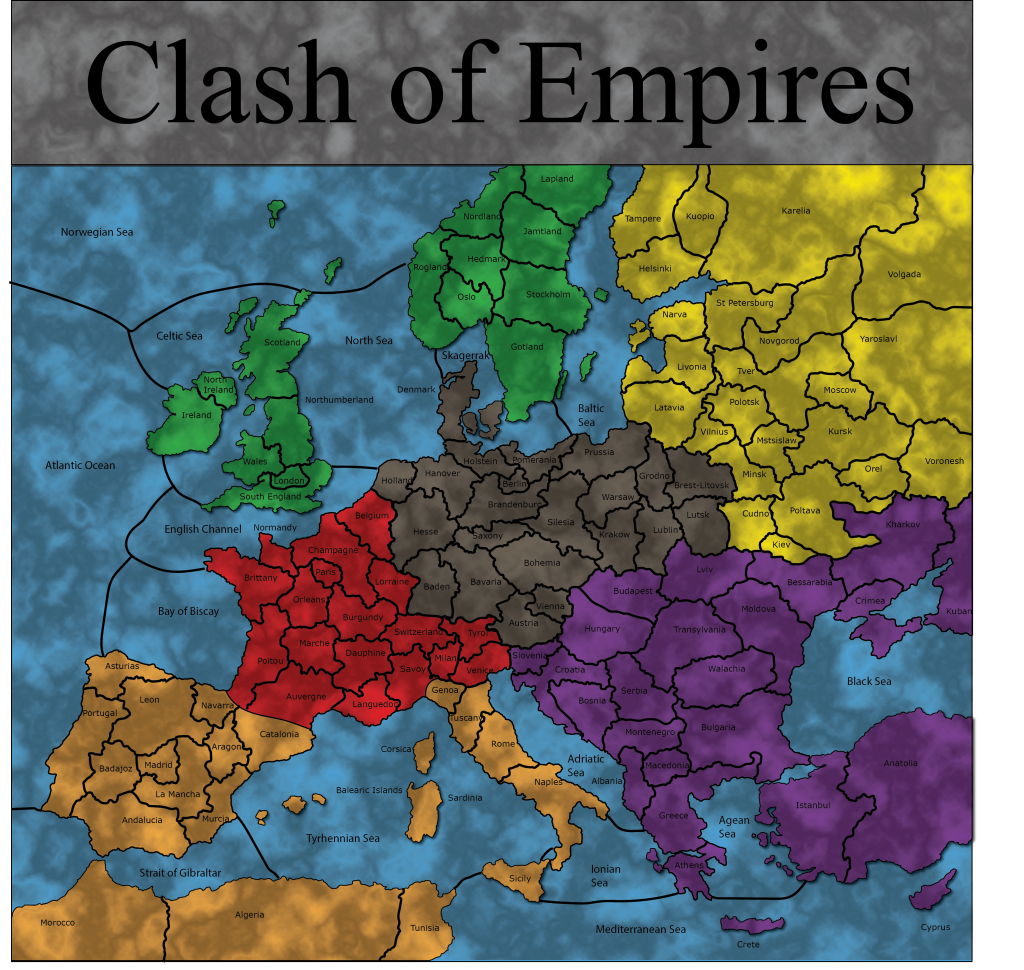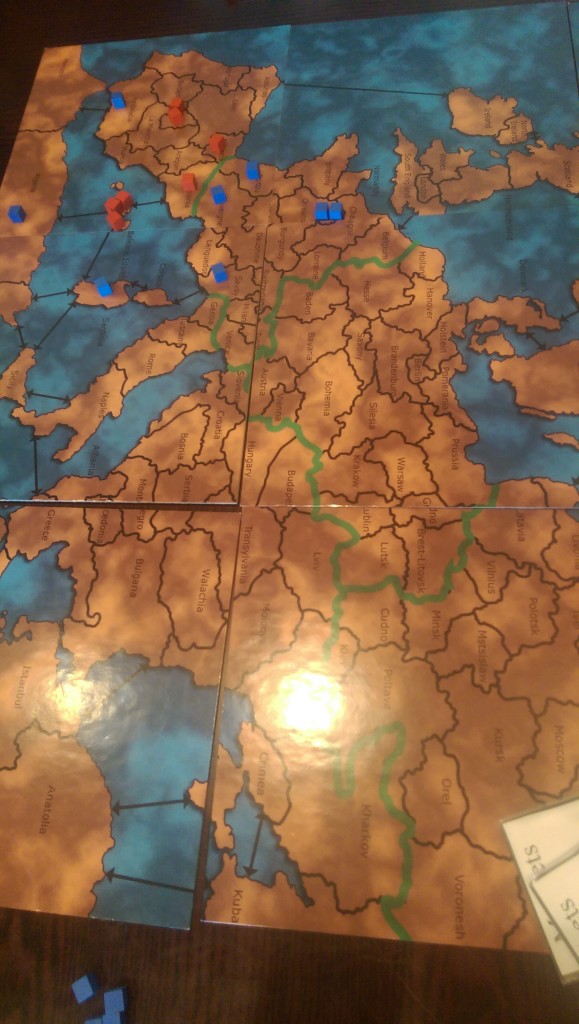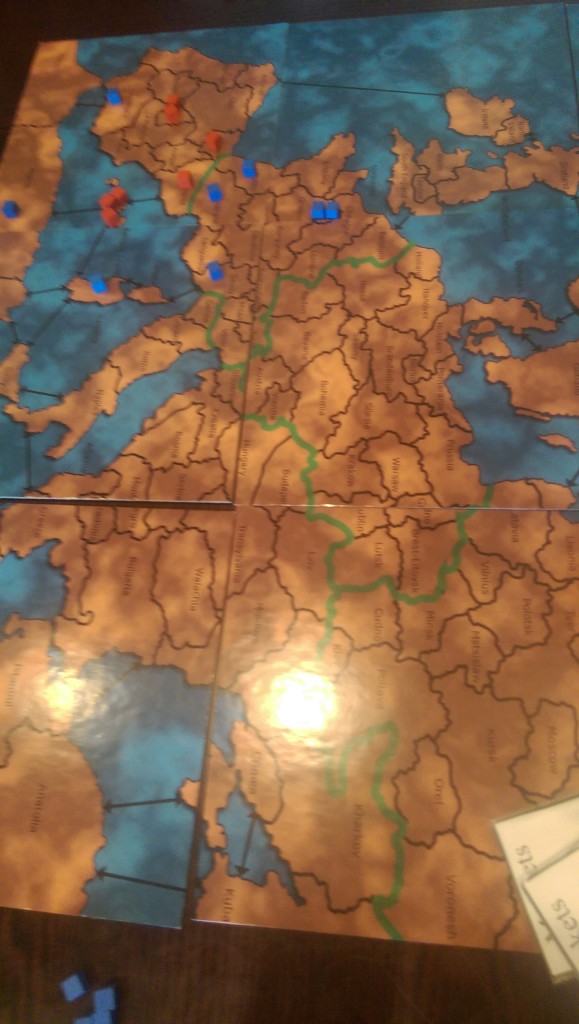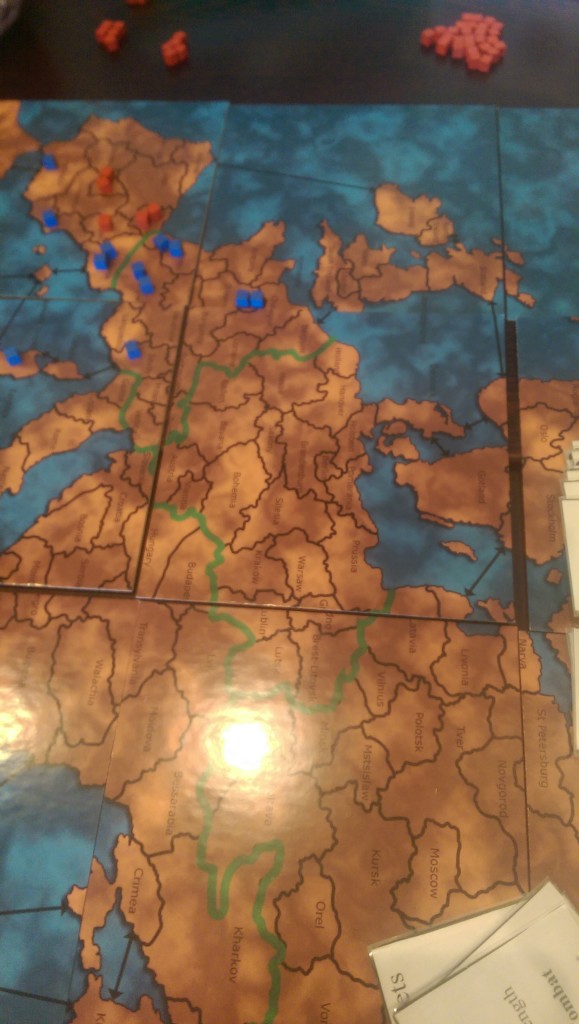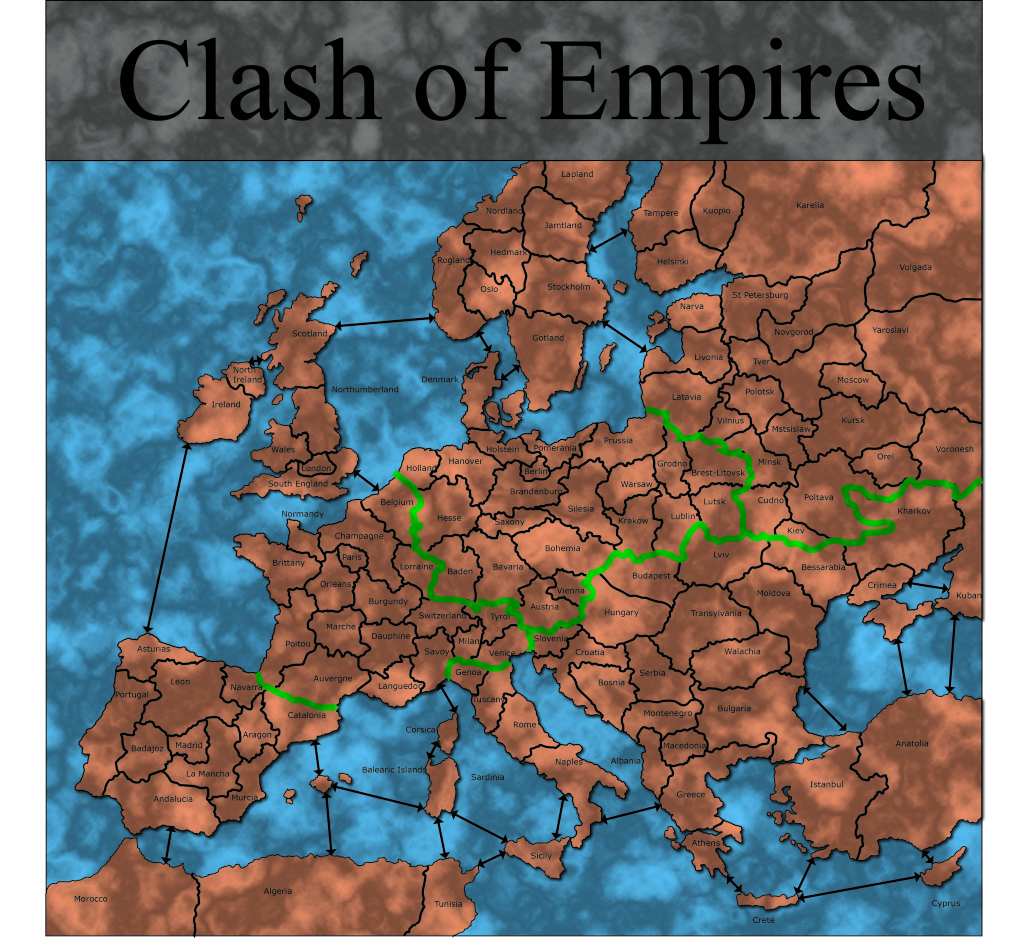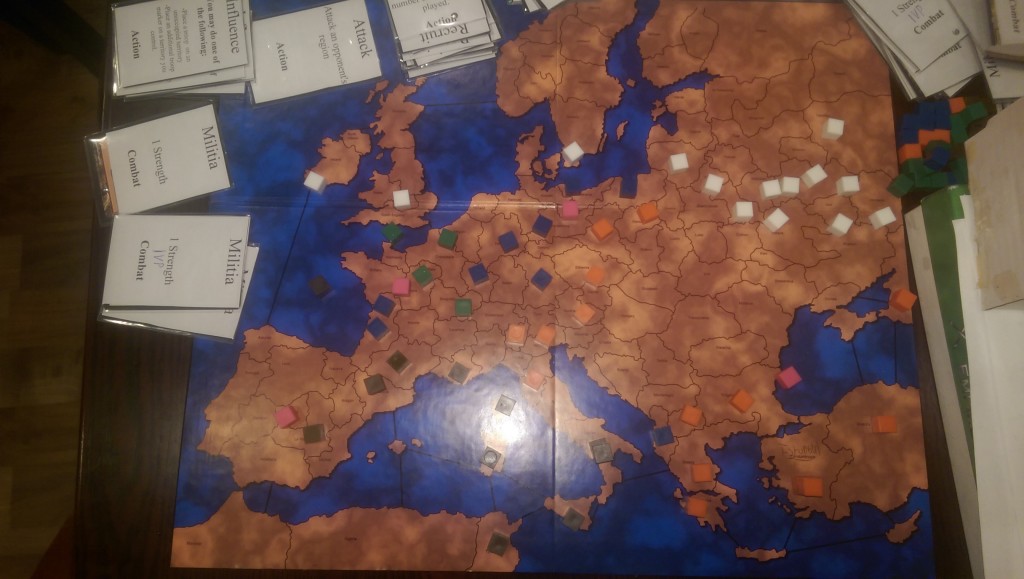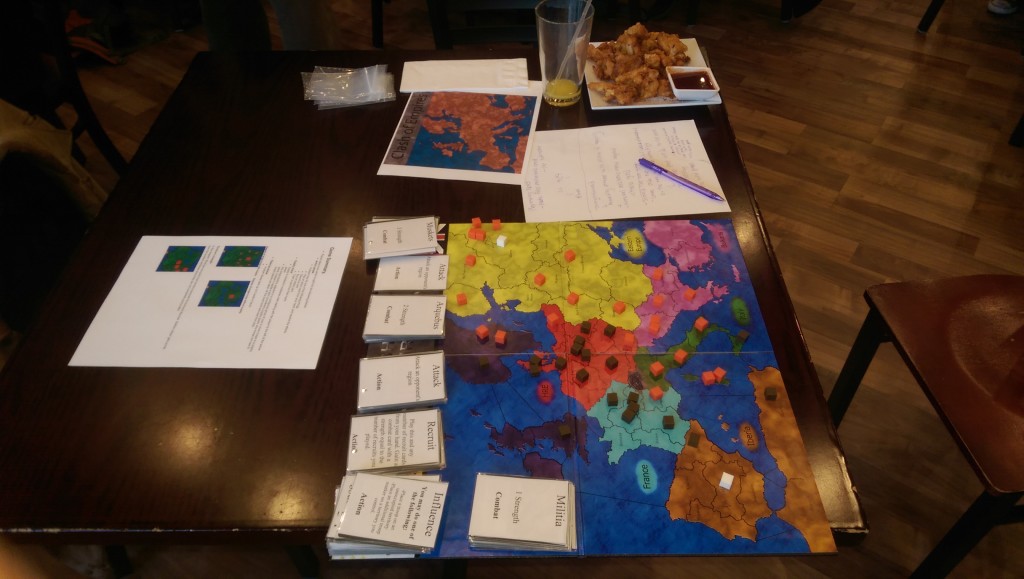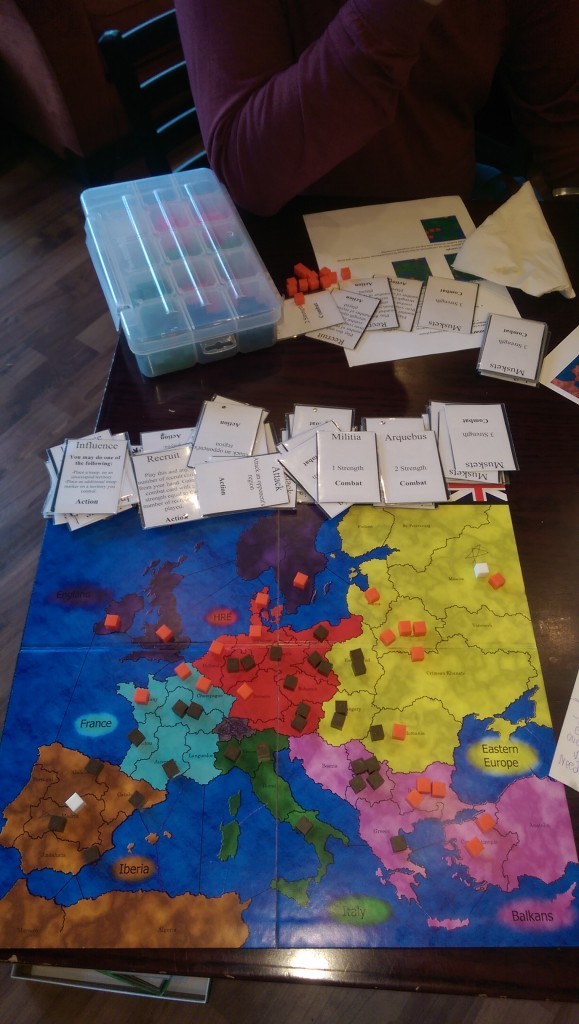After the latest Clash of Empires playtest in July, I decided to experiment with some major changes. It did not scale well because adding more players would end up making the game take too long, and there were balance issues with odd numbers of players.
In January 2015, I came up with a variant that made two major changes.
The first change was that players would secretly invest in certain factions on the board, and would earn points at the end of the game based on the success of those factions. Many multiplayer area control games suffer from excessive leader bashing or targeting a specific player based on factors outside the game. With secret investments, it is harder to figure out the leader or target a specific player. Additionally, things would be faster because players will not be able to slow the game down by trying to calculate points.
The second change was that each player made simultaneously took their turn. Players would secretly play cards from their hand representing a territory, and a specific faction that would get a unit there. This meant that I could easily add more players without making the game take significantly longer. I playtested this variant, and it seemed to go well. However, I decided not to implement the variant because it was too much of a change.
Due to the issues I had during the July playtest, I decided that some radical changes were needed. As a result, I revisited the variant I had made 18 months earlier and decided to try testing them again.
In addition to the rule changes, I decided to make a map of the US. Territory names were important, and I wanted to have ones that people would recognize.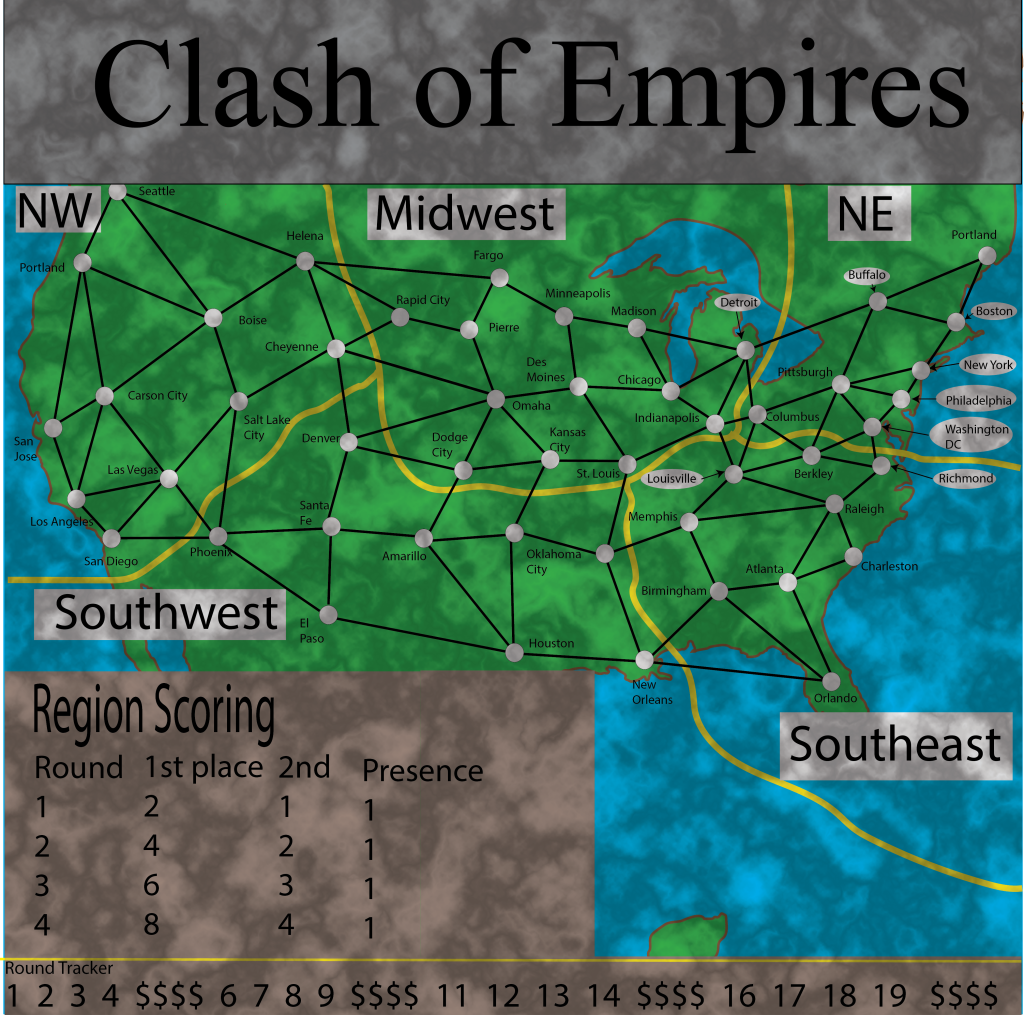
Additionally, I decided to make the theme revolve around fast food corporations. Many players did not like the old historic theme, and I felt fast food was a theme more people would like.
The playtesters liked the secret scoring mechanics, and the short playtime was also appealing to them. For the next playtest, I’m going to continue working on this variant, and focus on the following gameplay changes.
- Add special action cards: Players said they wanted more ways of influencing the game state aside from placing units on the board. To address this, I plan to add special action cards that give various bonuses such as reducing a company’s endgame score.
- Fewer territories: Players have cards in the hand that refer to specific territories. This was an issue because the map had over 50 territories, and finding some of them took time. Companies would score multiple times throughout the game, and having a large number of regions made scoring tedious. To fix this, the number of territories on the updated map will be significantly reduced.
- Rework combat: Combat occurred every turn because a players turn usually involved playing a company’s unit in a rival territory. Resolving combat took time and significantly slowed down the game.. Additionally, combat was based on a die roll, which left players frustrated when a bad roll made their turn meaningless. In the future, multiple companies can have units in the same territory, and combat will be triggered by special cards that will only show up every few turns. Players will also have more control over combat results.
